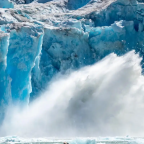
Among the countless disastrous consequences of climate change will be the degradation and loss of coral reefs, which will affect about 4.5 million people in Southeast Asia and the Indian Ocean, said a report. As a result of environment stress, coral reefs in Asia are getting bleached and dying, the United Nation’s Intergovernmental Panel on Climate Change (IPCC)’s Sixth Assessment Report on Impacts, Adaptation and Vulnerability, released on February 28, said.
The rise in temperature of seawater is affecting the functioning of symbiotic algae of corals and its bacterial consortia, which is resulting in bleaching and mortality of corals.
Corals, under stress, expel the symbiotic algae from their tissues, which causes them to turn completely white. This is known as coral bleaching.
The loss will impact the livelihood of 4.5 million fishers in Southeast Asia and the Indian Ocean.
At present, there are nearly 3.35 million fishers in Southeast Asia and 1.5 million in the Indian Ocean, the report said.
Although corals comprise only 0.1 percent of the global sea surface, it is home to over 25 percent of marine biodiversity, including fisheries, Down to Earth quoted Roxy Mathew Koll, climate scientist at the Indian Institute of Tropical Meteorology, Pune, as saying.
“They are the first that get affected by high temperatures,” Koll said.
Coral reefs in St Martin’s Island in Bangladesh contribute $33.6 million per year to the local economy. Similarly, Nharang Bay, Vietnam, is likely to suffer an economic loss of between $27.78 million and $31.72 million annually under different climate change scenarios, the report said.
Global warming increases the risk of irreversible loss to marine and coastal ecosystems. Global climate change and anthropogenic activities have severely impacted 571 coral species in the South China Sea.
Human activities also contributed to the decline in coral growth, which is expected to come down by the end of this century.
India, Japan, Indonesia, the Philippines, northern Maldives, the Persian Gulf and the Red Sea are found to be at high risk, the report said.
The Bay of Bengal has witnessed a two- to three-fold increase in the marine heatwaves in the last four decades, Koll said. Similar patches of marine heatwaves were observed in the Arabian Sea as well.












Social Profiles